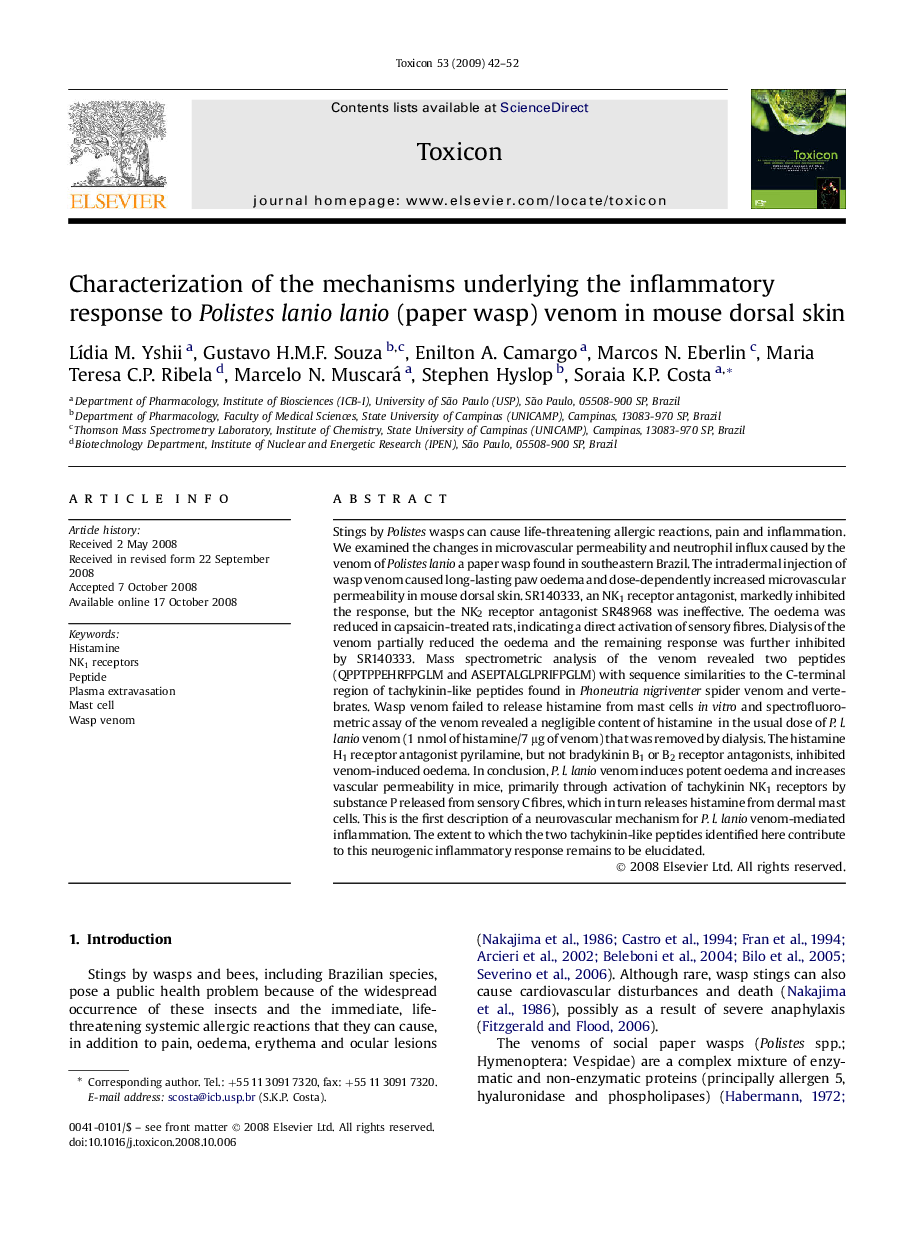| کد مقاله | کد نشریه | سال انتشار | مقاله انگلیسی | نسخه تمام متن |
|---|---|---|---|---|
| 2066492 | 1077189 | 2009 | 11 صفحه PDF | دانلود رایگان |

Stings by Polistes wasps can cause life-threatening allergic reactions, pain and inflammation. We examined the changes in microvascular permeability and neutrophil influx caused by the venom of Polistes lanio a paper wasp found in southeastern Brazil. The intradermal injection of wasp venom caused long-lasting paw oedema and dose-dependently increased microvascular permeability in mouse dorsal skin. SR140333, an NK1 receptor antagonist, markedly inhibited the response, but the NK2 receptor antagonist SR48968 was ineffective. The oedema was reduced in capsaicin-treated rats, indicating a direct activation of sensory fibres. Dialysis of the venom partially reduced the oedema and the remaining response was further inhibited by SR140333. Mass spectrometric analysis of the venom revealed two peptides (QPPTPPEHRFPGLM and ASEPTALGLPRIFPGLM) with sequence similarities to the C-terminal region of tachykinin-like peptides found in Phoneutria nigriventer spider venom and vertebrates. Wasp venom failed to release histamine from mast cells in vitro and spectrofluorometric assay of the venom revealed a negligible content of histamine in the usual dose of P. l. lanio venom (1 nmol of histamine/7 μg of venom) that was removed by dialysis. The histamine H1 receptor antagonist pyrilamine, but not bradykinin B1 or B2 receptor antagonists, inhibited venom-induced oedema. In conclusion, P. l. lanio venom induces potent oedema and increases vascular permeability in mice, primarily through activation of tachykinin NK1 receptors by substance P released from sensory C fibres, which in turn releases histamine from dermal mast cells. This is the first description of a neurovascular mechanism for P. l. lanio venom-mediated inflammation. The extent to which the two tachykinin-like peptides identified here contribute to this neurogenic inflammatory response remains to be elucidated.
Journal: Toxicon - Volume 53, Issue 1, January 2009, Pages 42–52